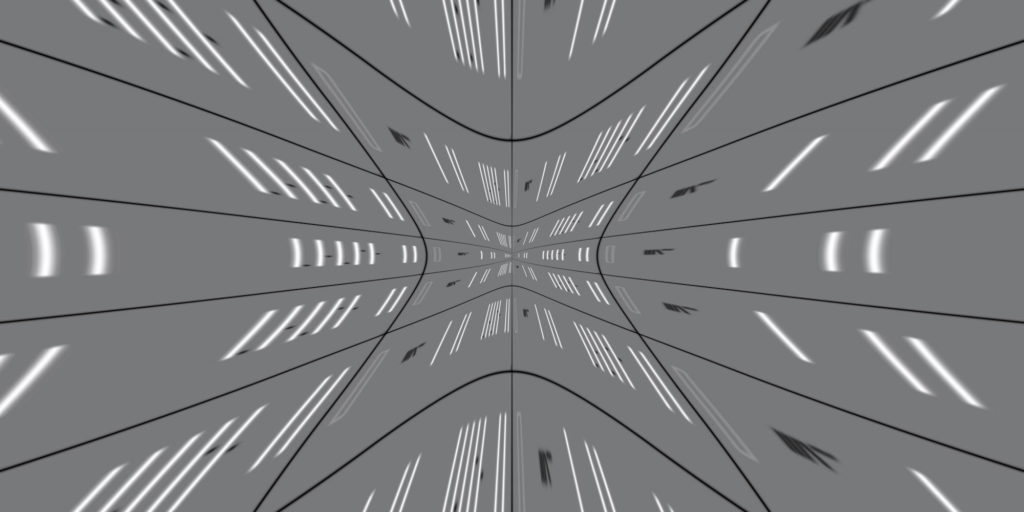
The story
Now with added choir sounds!
This is an updated (V1.2) ongoing experiment – hey, most of my stuff on Pianobook.co.uk is me just testing ideas!
The grey part of the virtual keyboard changes pitch, but not time, and so instead of samples getting shorter as you play higher notes (or longer as you play lower notes), the time is constant. So when you play a chord, then it doesn’t smear the sound in time depending on the pitch. As you can see, it needs chromatic samples, so it isn’t for trivial projects (The addition of the choir sounds arguably makes this ->.<- much less trivial!).
The red and blue parts of the virtual keyboard are traditional pitch=time samples. The red part is thrumming, whilst the blue part is gnimmurht. These didn't work as well as I wanted, and the samples need more work. You can use these as accompaniments to the grey part.
Although this is a test of an idea, you can actually use it as a virtual instrument. I used it for my entries in Dan Keen's 'Reflex' Challenge in July 2022. But if you add some chorus, and set the reverb to max size and max depth, then you can get several interesting pad and choir sounds that are quite unusual. The thrumming and reverse version are probably less immediately useful, but I know that the Pianobook.co.uk demo creators are a very talented and resourceful set of people!
The Sounds – – – – –
To the left of my PBCU logo, the left hand side has six vertical boxy sliders – they could be boxes disguised as sliders, or sliders disguised as boxes, but whichever they are, they do the same to the audio that you hear… These are 'mic' sliders for three different sounds. If you drag upwards in one of the little boxes then a white rectangle will appear. Drag it to about a third or a quarter of the way up – more will just make the output louder!
The left hand 'Thrum' box is for the red and blue party of the virtual keyboard. This is a thrum sound and a murht sound. Did you know that a backwards thrum was a murht? You do now!
The next three 'D' boxes/sliders are for the time-constant singing (I'm so, so, very sorry about my singing!) done by yours truly. There are three different articulations available:
– Dan
This slider sings 'Dan Keen', badly, with a rough voice (mine!), and with poor breathing technique. Once it has happened once, it then repeats, so you can have 'Dan Keen's as long as you can hold those keys down.
– DKK
This slider sings 'Dan Keek', and then repeats the 'Keen' whilst you hold the keys down. It won't be for long, I reckon.
– DDD
This is just Dan, repeated, over and over again. At low pitches it doesn't sound like the word 'Dan' any longer, and of course, it isn't any longer, because of the constant time effect across the keyboard range.
The six 'mic' sliders can be used as a mixer, so you can mix the Thrum and the Dan sounds as you will. There is no need to set the 'mic' sliders to full – this just makes the output louder!
The Sources of the Sounds
You really don't want to know… But I used to sing in a barbershop group…
The Controls – – – – –
To the right of my PBCU logo, there are a few controls. Taking them from left to right…
First, the Expression control, which is mapped to MIDI CC 11, gives you a vertical slider that controls the output volume of Decent Sampler. This is how you control the volume or loudness, of the sound!
Next, the Tone slider controls the cut-off frequency of a 2-pole low-pass filter: high is open, letting all frequencies through, low is closed, letting only low frequencies through – the Tone control is mapped to MIDI CC 1: the Mod Wheel the grey bar next to the virtual keyboard. The Q’ slider sets how resonant the filter is – at zero it is flat and boring, at 1 it is kind of peaky, but it isn't the resonant 24 dB/Octave timbre-twister that you associate with analogue synthesisers. Don’t be afraid to try moving the Low-Pass Filter and Q sliders around – there is a lot of control over the timbre available! The sounds from the 'mic' sliders are deliberately bright, so you can cull harmonics using the Tone controls. Have no mercy – filter those frequencies like it’s 1999…
The next area is a dual 'Chorus' effect. This makes it sound like the sound is detuned. There are two Rate controls, and two Depth controls. It is best if they are set to similar but different values… The Rate slider changes the speed of the wobbling of pitch. The 'Depth' slider controls the amount of pitch wobbling. The 'Mix' slider controls the Dry/Wet mix for both chorus effects. Slow is probably your instinctive speed for the Rates of the choruses, but when using a step sequencer then you might find that faster rates are surprisingly interesting…
The little grey dots on the right of the sliders are there to remind you of the basic 'home' position – a mid-range setting that is probably a good starting point for exploration. If you get confused, then just set the sliders back to the dots and you should be back in control!
The final area on the right hand side has only two sliders. They control the Reverb effect… The 'Size' slider sets the size of the room that the reverb is emulating, whilst the 'Wet' controls is like the Delay 'Wet' slider, it only controls the amount of reverberated sound that you will hear. The dry sound is always audible. The 'Wet' slider is mapped to MIDI CC 19.
Presets – – – – –
I keep cutting down on the number of controls, and yet I am also fighting a losing battle as my subconscious really loves to provide controls! I have included a few presets just so that instant gratification is available to those that need it.
MIDI Controllers – – – – –
1 'Modulation Wheel' controls the Low-Pass Filter cut-off frequency = the 'Tone'
11 'Expression' controls the output volume
19 'General Purpose 4' controls the Reverb Wet/Dry mix
V 1.2
UI Video for a slightly different virtual instrument
Interface

Reviews for Dan Time
Leave a review to let others know what you thought of the instrument!
DANK!
Get it? Dank? Dan - K? No? Ok.
This is a very fun instrument that features Marting saying things... One of them being DAAAAN KEEEN, which is a tribute to our beloved Dan Keen. While this is a ridiculous idea, it ends up being a cool vocalizer-like instrument that might be interesting in those edm tracks. There is way too much to explore, and there's also a second version in case you want more!

